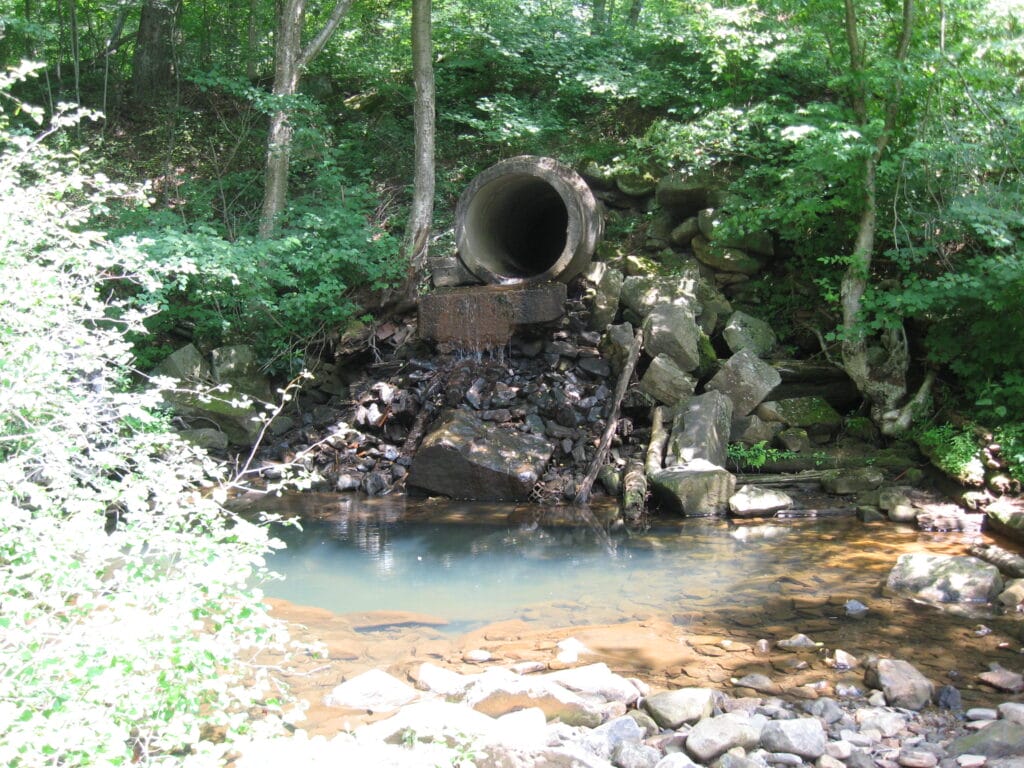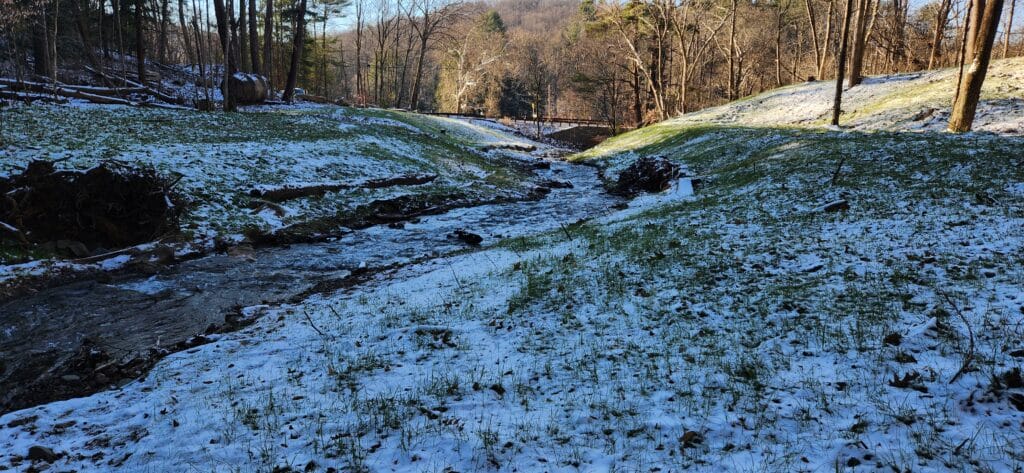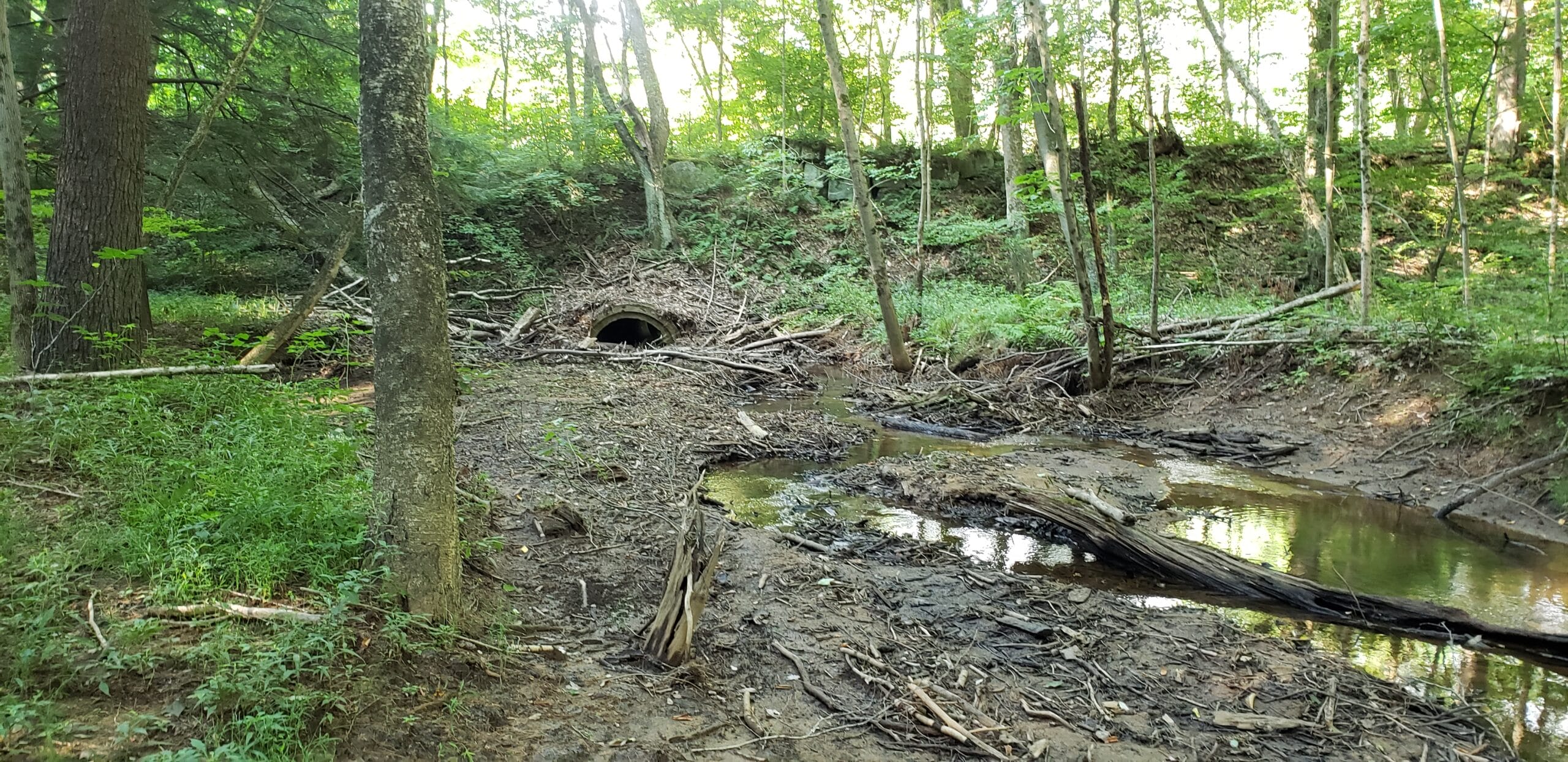In the crisp fall air of September 2023, Irwin Run in Elk County, Pa., was about to breathe as a free stream for the first time in more than 170 years.
For decades, a “waterfall” where State Route 3002 crossed the stream had been created by an 8-foot drop from a culvert’s outflow to the pool below. To some, it might have been considered pretty, but the culvert created a barrier for trout and other stream-dwelling creatures. Nothing below the culvert had any chance of reaching upstream waters.
An industrial history
Irwin Run is a site of past industrialization dating back to the Civil War era. The developed section of the area was founded in the 1850s by Thomas Irwin, whose death in 1890 prompted the sale of the area.
The late 1800s was a time of train expansion across the U.S., and the Clarion River area was no exception. Around 1890, Clarion River Railroad constructed a grade crossing on Irwin Run, a tributary to the Clarion, on top of a splash dam that had been built to help send logs down the Clarion River by creating man-made floods.
The Allegheny National Forest (ANF) purchased the property in 1936. Once the railroad shut down in the 1950s the site sat abandoned for almost 70 years and began posing risks to the surrounding infrastructure. Eventually, the ANF deemed that it was time for the culvert and railroad grade to be removed.

Planning begins
TU became involved in the Irwin Run project in 2016, collecting site survey data at the site. In 2022, TU entered an agreement with the ANF to handle the project’s planning, design, implementation, and management.
Despite challenges posed by the barrier and Irwin Run’s industrial legacy, the stream’s cold waters support a population of native brook trout that draws anglers who appreciate chasing these colorful mountain jewels in a gorgeous, wild setting.
TU stream restoration specialist Phil Thomas managed the project for TU and the ANF. Duffy Inc was the construction contractor.
Fish from the site were captured and moved upstream during the construction phase.
Funding for the project was provided by several sources, including through TU’s recent five-year, $40 million agreement with the Forest Service for infrastructure-focused stream reconnection projects on Forest Service lands. Additional funding and support were provided by the Richard King Mellon Foundation, along with a competitive grant from the National Fish and Wildlife Foundation, with funding support from the U.S. Fish and Wildlife Service.
The final steps
Like a puzzle, the hard work is in the beginning, figuring out where to start, slowly putting the pieces together.
Before any excavation could begin, tree clearing was necessary for site access. Instead of discarding the trees, many were used within the project for habitat and stabilization structures. The overburden and streambed material removal then began with two excavators running eight hours a day for almost three weeks.
An estimated 3,000 cubic yards of material was moved; roughly equivalent to about 200 tri-axle truck loads. Grade control structures were installed every 28 feet to achieve stream continuity through the site.
Scoop by scoop, the buried streambed was seeing the light of day for the first time in 170 years.
To preserve the history and heritage of the site, all the large rocks on the railroad grade crossing were used in either streambank stabilization or for the grade control structures. Part of the culvert is now on display at the site, sitting atop the rail lines that once used to cross over the stream.
On September 30, 2023, the barrier was gone, and Irwin Run could once again flow unimpeded into the Clarion River reconnecting nearly 5 miles of great coldwater habitat.
While the construction is finished, work is not done. Several partners are planning a tree planting at the site, and TU is currently planning 6 miles of stream restoration using strategic wood additions in the Irwin Run watershed throughout 2024 and 2025.
TU and ANF will continue to monitor the site to gauge the long-term impact of this project.
Irwin Run once again flows freely.




